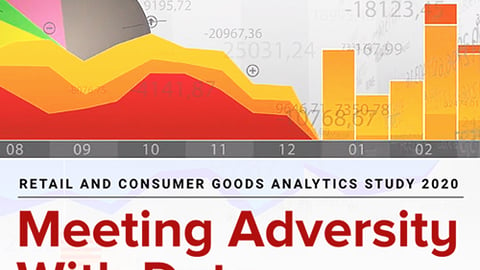Getting the Most From Customer Data
Retailers and consumer goods companies have access to unprecedented amounts of shopper data, and the most tech-savvy among them are using this information to differentiate themselves from the crowd.
Whether it is a new product, shopping experience or technology release, organizations can receive meaningful insight into its effect on consumer sentiment in real-time. This new age of data is helping retailers and consumer goods manufacturers tailor their offering directly to their customers’ wants and needs.
To uncover how retailers and consumer goods companies can make the most of shopper data to get a leg up on the competition, we sat down with Chris Chapo, Amperity’s vice president of advanced analytics, for an exclusive Q&A on the subject.
CGT: How can retailers best leverage consumer data to get a clear understanding of shopper demand?
Chapo: Historically, many retailers have relied heavily on macro market trends and limited first-party data such as point-of-sale and e-commerce transactions to sense customer demand. But now retailers have more first-party data than ever before, in addition to advanced tools to manage that data in ways never before possible, including customer data platforms (CDPs), machine learning and AI, and cloud computing. Savvy business leaders are building customer demand profiles with these technologies leveraging not only sales data, but also clickstream interactions, e-mail engagement, product reviews, and other signals, which leads to more accurate and granular insights, improved outcomes, and cost savings.
CGT: How can retailers turn their deep knowledge about shoppers into insight they can actually use?
Chapo: Unfortunately, customer analytics can often generate insights that, while interesting, do not directly lead to business value. Retailers who are successful in translating this knowledge into impact lean on many of the principles of the scientific method we learned in school. They leverage the data to develop hypotheses of specific actions that could drive growth or improve the customer experience. Next, they perform experiments to see if the new action has the expected outcome. If it does, they roll this out at scale, monitor performance, and move on to the next potential opportunity. This approach is the foundation for building a culture of data-driven learning and growth.
CGT: Technology is only part of a successful analytics initiative; the other half is people. How can retailers build an analytics-focused enterprise?
Chapo: Years ago, I heard a mantra that resonates with me to this day: “Have a big vision, but start with small bites.” While many companies have bold aspirations to reinvent their core business processes based on data and analytics, those who are successful pick one area to get started. The hard part is determining where to start.
Many attempt the traditional impact-versus-effort approach, yet struggle to find something that is impactful enough as a starting point. An alternate approach is to identify those initial opportunities that have the highest likelihood of success, which builds organizational buy-in and the momentum for change. Key questions to hone in on include:
- “Where can we most quickly drive value?”
- “What areas are not being addressed at all?”
- “Where do I already have a willing partner?”
CGT: What role does cloud computing play in winning with analytics?
Chapo: The cloud allows analytics leaders to focus on solving business and customer problems as opposed to worrying about infrastructure and tools. Analytics offerings from cloud providers like AWS store massive amounts of data with fast interactive analytics, without the overhead of hosting platforms internally. Additionally, cloud providers make it possible for data scientists at retailers to start small and leverage pre-built cloud AI and ML services to rapidly deploy solutions like product recommendations, forecasting, and image recognition without the need to build the stack from scratch. Put simply, the cloud is the analytics leader’s secret weapon to unlock speed to value for the enterprise.







